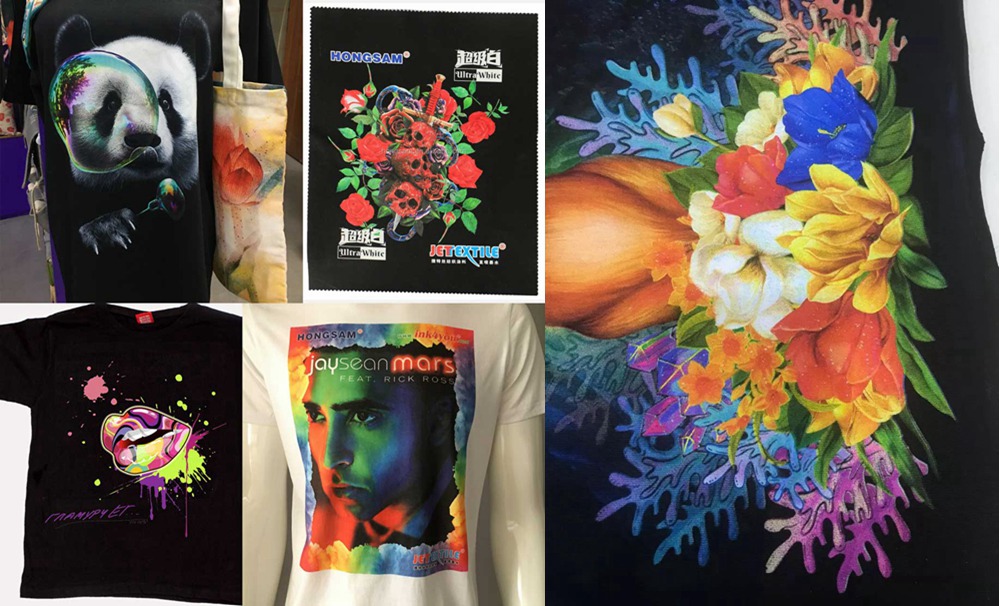 May 12,2023
May 12,2023
Several years ago, many customers did not accept direct-injection digital printing because the high cost. The purchase cost of a set digital printing equipment is at least 150% of the traditional printing and dyeing equipment, which increases the production cost.

In digital printing, there are two different printing technologies to choose from: scan printing and single-pass printing. The printheads of the scanning printer move left and right on the fabric to print the fabric, but for multi-pass scanning printing, more printheads can be installed to meet customer needs. As a relatively new printing technology, Single-pass printing can not only increase printing speed, but also increase printing quality, however, this requires more nozzles to be installed on the printing machine.
As we all know, 80% or more of the investment cost of a printing machine comes from the printheads, the more printheads, the more expensive the printing machine will be. In addition, due to the difference of the two technologies, the cost of other components are also different , and the components cost of Single-pass printer is more expensive than that of scanning printer.
Business owners who have used digital inkjet printing machines know that textile digital printing is completed mainly by the printheads and printing inks. Printing inks pass through many ink pipes inside the printheads, and then be sprayed by many tiny nozzles, so as to print on the fabrics. Therefore, printers must use more fluid inks to prevent nozzle clogging and printhead failure.
Therefore, we need to use different types of digital textile printing ink according to the printing requirements of the digital inkjet printing machine. In order to prevent corrosion of the nozzle, the ink for digital printing is more expensive than the ink for traditional printing, and additional ink purification is necessary during the printing process. In addition, the advantage of digital inkjet printing is obvious only when using inks with a large color gamut.

1. Reduce Labor Costs
In the process of traditional printing machines, there are many links that need manual work by multiple operators, resulting in high labor costs. The digital inkjet printing machine almost realizes the automatic control process.
2. No Cost of Plate Making
In digital inkjet printing, the pattern is directly printed on the fabric, eliminating the plate making in rotary screen printing. It not only saves the valuable time of plate making, but also saves the additional cost of plate making.
3. Longer Service Life of Printhead
Most of the digital printing machines currently on the market are equipped with nozzle antiwear devices and intelligent monitoring system technology, such as increasing the distance between the nozzle and the fabric to reduce the probability of nozzle damage. Therefore, the service life of printheads in digital printing is longer than the service life of printheads in traditional printing machines, which saves the cost of printheads, and effectively reduces the maintenance cost of the printing machine.
4. Shorten Delivery Time
The increase in demand for fast response in the market has prompted the accelerated development of digital printing. Seen from the fast-moving clothing brands such as ZARA, H&M, and GAP, with the help of digital inkjet printing, factories can increase the productivity and shorten delivery time. At the same time, more and more brands are now more and more accepting of paying higher costs for faster delivery, such as delivering a batch of fabrics within a week or even 3 days, instead of weeks and months.
5. Less Ink Consumption
Yes, digital printing inks are more expensive than traditional printing inks, but the digital printing process can save ink consumption. If appropriate technology is used to scientifically allocate ink consumption, it can save at least 20% of inks.
Today, the digital direct-injection printing machine has gone from proofing to the stage of medium-sized and large-sized production. The digital direct-injection T-shirt printing machine has gone through the promotion period and entered the growth and maturity period. Both printing houses and brand owners are aware of the development potential of digital printing, and are willing to increase investment in digital printing.
As the market's sensitivity to prices gradually decreases, the business model based on price theory will eventually be replaced by quality, service, and brand. Low value-added garment processing is gradually shifting to India, Southeast Asia and other regions. Industry changes are forcing traditional printing companies to transform to high-end printing, helping more new technologies and new models to participate in, and promoting the overall upgrading and development of the printing industry.